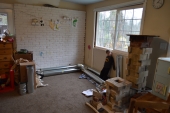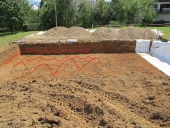Late note : Whatever Jay C. White Cloud says ! A.L.
Thanks Allen...that made me laugh too hard...I had to go find a tree!!!
Hi Heidi,
The books that Allen suggested are the go to resource for most of us as well, unless we are getting into some historical restoration and/or esoteric vintage Cobb-Bousillage-Adobe architecture of some kind. I have been trying to put together reading list for folks on Amazon that they can just go and look at for the different skill sets. Once complete I will try to post it here on Permies.
I must admit that 99% of my "mud" work is either small scale educational (mix a batch by hand and build say an oven or a few bricks) or it big and heavy industrial type (paid architecture with heavy equipment, mixers, etc.) The "mud party" stuff is usually going on while I get a timber frame ready, so I would defer to Allen's guidance when every you have a question about "mud" stuff, he has probably done way more than I in regards to contemporary cobb.
I remember you mentioning having a possible lower back challenge, and I know what that is like! This kind of work can really strain that region. I was wondering if you have looked in "clay straw" work? It may very well be applicable for your application. This is a "slip form" process, but should work very well with "clay straw" and your cordwood wall.
As I had said in our first contact, much of my work is in historical context, so that is how I look at many of these modalities, even cordwood-"stackwall". Original "stackwood" nogging, as Roy and I have discussed it, was typically not left exposed, especially on the outside of a structure that would be a house, (barn yes, domestic architecture no.) So for a house, the exterior would get a final parging of cobb, then probably a lime render finish. The interior could be finished off in numerous ways depending to culture of the region. I know that my next "stack would" will most likely be a "slip form" type like you would find in the Middle East or China.
Best of luck to you,
























































